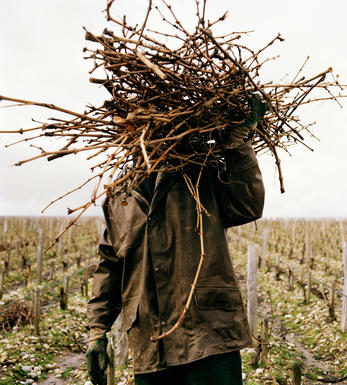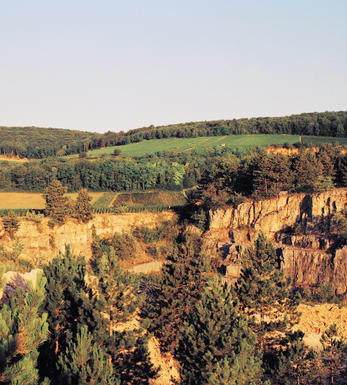
2011 Corton-Charlemagne, Grand Cru, Domaine Bruno Clair, Burgundy

About this WINE

Bruno Clair
Bruno is the grandson of Joseph Clair, originally from Santenay, who fell in love with a girl from Marsannay, Marguerite Daü, while he was stationed at Dijon during World War I.
When Bruno was ready to begin life as a vigneron there were family problems at the domaine, so he began by creating some vineyards of his own, replanting in Marsannay and reclaiming some friche at the top of the slope in Morey-St-Denis. However in the mid-1980s the domaine - less vineyards sold off by one family member to Louis Jadot – was reconstituted with Bruno in charge. He soon recruited a former colleague, Philippe Brun, to work with him in the cellar and the pair have now developed the domaine to its current size of 24 hectares and 24 different wines, made possible when certain contracts with Maison Louis Jadot (Vosne-Romanée, Gevrey-Chambertin-Clos St-Jacques and Chambertin-Clos de Bèze) and Fourgeray de Beauclair (Bonnes Mares) came to an end in 2006.
The grapes are rigorously sorted in the vineyard, then usually destemmed, though some stalks were retained in 2005. The wines are powerful but do not seem over-extracted, even though Philippe Brun is strong proponent of punching down, albeit happy to modify his techniques according to the vintage- so just one pigeage per day in 2007 instead of the usual five or six. While there is a hefty proportion of new oak, a good proportion of the village wines are matured at least for part of their élevage in wooden foudres, to reduce the overt effect of the barrel.
Chambertin-Clos de Bèzes Grand cru Two-thirds of the vines date back to 1912 with the remainder planted in 1972. This is an exceptional wine even by the standards of this great vineyard and will repay significant ageing. The Clair blocks are in the middle of the vineyard with the rows running from top to bottom.
Bonnes Mares Grand Cru This holding, which is on terres blanches in the Morey-St-Denis part of Bonnes Mares, came back from a long lease to Domaine Fougeray de Beauclair in 2006, and there will be more to come later on. The vines of nicely mature, having been planted in 1946 and 1980. It is too early to define the character of a Bruno Clair Bonnes Mares however.
Gevrey-Chambertin 1er Cru Cazetiers Very different in style to the domaine’s Clos St-Jacques next door, even though most of the vines were planted at the same time with the same plant material – but there is one big difference: Bruno Clair’s holding of Cazetiers is at the top of the slope on white marl, while the Clos St-Jacques rows run from the top to bottom. Though the elevation is reflected in the wine’s undoubted minerality, this cuvee tends to be relatively low n acidity and comes round quite quickly. Exceptionally stylish, though.
Gevrey-Chambertin 1er Cru Clos St-Jacques Planted in 1957 and 1972. Only since 1999 has the wine been sold as from Domaine Bruno Clair – before that it was under his mother’s name, Domaine G Bartet, though with the same style of label. Despite the immediately sumptuous wealth of red and black fruit, this wine has the power to develop with age to a much greater extent than the Cazetiers.
Savigny-lès-Beaune 1er Cru La Dominode The vineyard dates back to 1902, albeit with replacement of individual vines which have failed to survive. It is remarkably stylish for Savigny and almost seems to possess the refinement of a Côte de Nuits.
Marsannay Longeroies Whereas Clair’s Marsannay Grasses Têtes is full-bodied and quite tannic, and his Vaudenelles subtle and elegant, the most complete of the three single-vineyard bottlings is perhaps Les Longeroies, mostly from vines of 70 years old and more, which combines power and finesse. Good vintages will keep very well.
Morey-St-Denis Blanc, En la Rue de Vergy Planted from scratch with Chardonnay in 1981 on scrubland above Bonnes Mares, with virtually no topsoil. The vines seem to grow straight out of the rock. A refreshing, balanced white wine with good acidity.

Aloxe Corton
These two Grand Cru vineyards, Corton and Corton-Charlemagne, lie astride three villages at the northern end of the Côte de Beaune: Ladoix, Aloxe-Corton and Pernand-Vergelesses. The main body of the hill of Corton faces due south, with an extended flank exposed to the east, and another facing westwards. The white wines mostly come from west and south-west expositions, along with a narrow band around the top of the hill.
The Emperor Charlemagne owned vines here in the eighth century, and legend has it that his wife insisted he planted white grapes so as not to spill red wine down his beard and clothes. Corton-Charlemagne is always white and there is also a theoretical Grand Cru appellation called, simply, Charlemagne, which is never used. Corton is almost entirely red but there are a few white wines too.Ladoix is a rarely-seen appellation, as most wine here are sold as Côte de Beaune Villages. Aloxe-Corton is better-known, but as with Ladoix the best vineyards have been designated as Corton and Corton-Charlemagne.
There are also 25 lieux-dits that may be used on wine labels, together with Corton: Les Bressandes, Les Chaumes, Clos des Meix, Clos du Roi, Les Combes, Le Corton, Les Fiètres, Les Grèves, Les Manguettes, Les Maréchaudes, Le Meix Lallemand, Les Paulands, Les Perrières, Les Pougets (Pougeots), Les Renardes, La Vigne au Saint, Les Basses Mourottes, Les Carrières, Clos des Cortons Faiveley, Les Grandes Lolières, Le Rognet et Corton, La Toppe au Vert and Les Vergennes.
- 90 hectares of village Aloxe-Corton
- 38 hectares of Premier Cru Aloxe-Corton
- 118 hectares of village Ladoix
- 14 hectares of Premier Cru Ladoix
- 72 hectares of Corton-Charlemagne. The finest from En Charlemagne (Pernand) and Le Charlemagne (Aloxe)
- 160 hectares of Corton. The best from Clos du Roi, Bressandes, Pougets

Chardonnay
Chardonnay is often seen as the king of white wine grapes and one of the most widely planted in the world It is suited to a wide variety of soils, though it excels in soils with a high limestone content as found in Champagne, Chablis, and the Côte D`Or.
Burgundy is Chardonnay's spiritual home and the best White Burgundies are dry, rich, honeyed wines with marvellous poise, elegance and balance. They are unquestionably the finest dry white wines in the world. Chardonnay plays a crucial role in the Champagne blend, providing structure and finesse, and is the sole grape in Blanc de Blancs.
It is quantitatively important in California and Australia, is widely planted in Chile and South Africa, and is the second most widely planted grape in New Zealand. In warm climates Chardonnay has a tendency to develop very high sugar levels during the final stages of ripening and this can occur at the expense of acidity. Late picking is a common problem and can result in blowsy and flabby wines that lack structure and definition.
Recently in the New World, we have seen a move towards more elegant, better- balanced and less oak-driven Chardonnays, and this is to be welcomed.


Buying options
Add to wishlist
wine at a glance
Delivery and quality guarantee